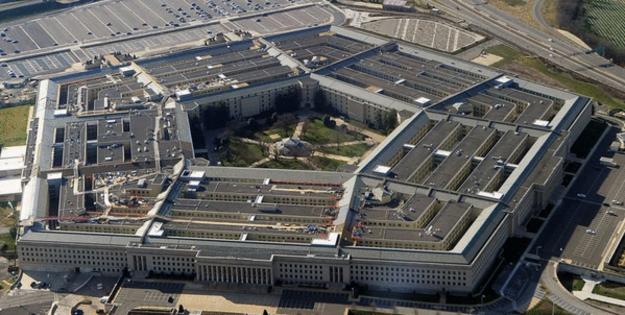Hill wants $15 billion for weapons Pentagon didn't seek: report
Published in Political News
Defense appropriators in Congress have recommended adding nearly $15 billion the Pentagon did not request in fiscal 2025 for several hundred military research and procurement programs, a new database shows.
In most cases, those increases were additions to the amount of funds the Pentagon had sought. But more than one-third of the money went to scores of new programs, mostly weapons, that were not in the Pentagon’s budget plans for fiscal 2025, according to the report and corresponding database, which were released Wednesday by Taxpayers for Common Sense, a nonpartisan budget monitor.
The report is the latest in a series of analyses in recent years by the group and CQ Roll Call that have disclosed how members of Congress appear to be funneling billions of Defense dollars to their constituents — and sometimes to campaign contributors — for initiatives the Pentagon did not formally seek and that bankroll contracts that defense lobbyists acknowledge are often open to competition in name only.
In the new report, the taxpayers organization spotlights programs that were not sought by the Pentagon but were inserted in the funding tables by members as ideologically diverse as such as Illinois’ Democratic Sens. Richard J. Durbin and Tammy Duckworth and Republicans such as Rep. Elise Stefanik of New York, a close ally of President Donald Trump, and Rep. Tony Gonzales, R-Texas, an appropriator.
‘Backdoor earmarks’
The spending directions from Congress are included in tables that Republican Defense appropriators sent the department last month to spell out how members believe Defense money in the fiscal 2025 continuing resolution should be spent.
The stopgap spending bill’s $895.2 billion for Defense programs is $6 billion over fiscal 2024, a cut in spending after inflation is factored in, while nondefense departments and agencies saw their nominal funding cut by $13 billion compared to fiscal 2024.
Lawmakers always add money to the Defense budget above the requested amount for some programs and cut it for others. But, more and more in recent years, as uncompetitive earmarks have been halted except for nonprofit organizations, members have in many cases used so-called “program increases” to try to in effect funnel defense funds to favored recipients.
Gabe Murphy, policy analyst for Taxpayers for Common Sense, said in an interview that the Defense Department program increases are “backdoor earmarks.”
Steve Ellis, the group’s president, said in a statement that earmarks require lawmakers to “disclose their involvement in proposing them, spell out their purpose, and certify that they have no financial interest in the earmark. In contrast, program increases are largely anonymous, come with little to no justification, and do not require lawmakers to certify anything.”
Bipartisan appetite
The billions in added Defense funds for program increases often go each year to high-profile, top-dollar initiatives such as the F-35 fighter jet program.
But the vast majority of the hundreds of annual additions, in fiscal 2025 and previously, are worth less than $30 million apiece but add up to sizable amounts even in the massive national defense budget.
Congressional and Pentagon auditors have previously confirmed that they have not produced any reports examining the effectiveness of the congressional “program increases.”
Lawmakers’ appetite for adding unrequested funds each year for projects they say will benefit their states or districts is a bipartisan and bicameral phenomenon.
One of the funding increases was $5 million for the Army to research a “thermoplastic tail rotor drive system” for Blackhawk helicopters — spending the service had not sought.
Stefanik issued a press release last June after the House and the Senate Appropriations committees had signed off on fiscal 2025 Defense spending bills with the money included.
Even though such “program increase” money is supposed to be put out for competition, Stefanik listed the Blackhawk system as one of the “defense wins” she had garnered for her district and region.
“The investments I secured through this year’s defense appropriations bill . . . will bolster our national security and further solidify Upstate New York’s role as a defense technology hub,” Stefanik’s statement said.
She noted that the funds will enable the Army to “research using thermoplastic made by Collins Aerospace in Rome, NY.”
Collins Aerospace is a subsidiary of RTX Corporation, formerly Raytheon.
According to OpenSecrets.org, a nonpartisan and nonprofit monitor of campaign money, RTX Corporation’s PAC contributed $10,000 to Stefanik’s campaign committee in the 2024 election cycle, the report said.
“As a senior member of the House Armed Services Committee, I am proud to advocate on behalf of Upstate New York and the North Country in the annual national defense bills,” Stefanik said by email. “I will always work to deliver results for NY-21 defense companies that support jobs in my district and ensure our service members have access to the best technology possible.”
Illinois Humvee program
The funding tables also include $100 million in unrequested Army funds for a “Next Generation HMMWV Shop Equipment Contact Maintenance Vehicle,” a Humvee that provides mobile maintenance to maneuvering units.
In a joint press release last July celebrating “Spending Bills With Illinois Priorities Secured By Durbin, Duckworth,” the senators highlighted the Senate bill’s proposed funding for the project, which was $120 million, “to continue manufacturing” of the vehicle at the Army’s Rock Island Arsenal in Illinois.
The vehicle is built at the arsenal by AM General. That company is owned by KPS Capital Partners, which has contributed to both senators’ campaign accounts.
Duckworth’s office did not immediately reply to a request for comment.
A spokesperson for Durbin said by email Wednesday that tactical vehicles at the Rock Island Arsenal are “recognized as critical by the Army.”
Despite Durbin’s previous touting of the added funding for the Humvee program, the spokesperson said Democrats “did not have any hand” in writing the new stopgap spending bill, “so any questions about lawmakers increasing DoD funding in the FY25 bill should go to the Majority.”
Scramjets
Another added spending line was $15 million for the Air Force to support “Vertical Integration of Scramjet Supply Chain.”
In a June 2024 press release celebrating his role in crafting the House’s Defense spending measure, Gonzales wrote that the funding would “accelerate the research, development, and production of hypersonic propulsion systems/airbreathing hypersonic engines” by putting all the suppliers in a single location.
Notably, his statement said: “The Southwest Research Institute in San Antonio specializes in this area of military innovation.”
In 2024, the institute paid $320,000 in lobbying fees to Akin Gump Strauss Hauer & Feld LLP, the taxpayer group said, and records show individuals and PACs associated with Akin Gump contributed $14,503 to Gonzales’ campaign in the 2024 election cycle.
Gonzales’ aides did not immediately reply to a request for comment.
More Defense funds en route?
The funding tables in Defense appropriations laws are not hard requirements in statute, but they communicate to the Pentagon how appropriators want the funds to be spent — and the department normally adheres to their direction.
Because the fiscal 2025 funding tables were sent to the department only after the continuing resolution had been enacted and were the work of only Republicans, they might be construed as being less binding than usual.
Yet the tables represent just about all the detailed information the department has to go on about lawmakers’ intent.
In fiscal 2023 Defense spending law, the funding tables included 996 unrequested additions for program increases amounting to $12.2 billion. Not included in the Taxpayers for Common Sense tallies are congressional hikes to spending for military personnel, operations and maintenance, military construction or other major categories of defense spending.
In the fiscal 2024 law, the number surged to $21 billion for 1,072 separate increases.
The fiscal 2025 total of $14.95 billion, while down from the prior year, may not be the end of congressional insistence on unrequested boosts for little-known weapons accounts.
Senators unveiled on Wednesday a compromise budget resolution that could add at least $100 billion for defense programs over the next decade, and lawmakers have said they want those monies spent in the next couple of years.
_____
©2025 CQ-Roll Call, Inc., All Rights Reserved. Visit cqrollcall.com. Distributed by Tribune Content Agency, LLC.




























































Comments